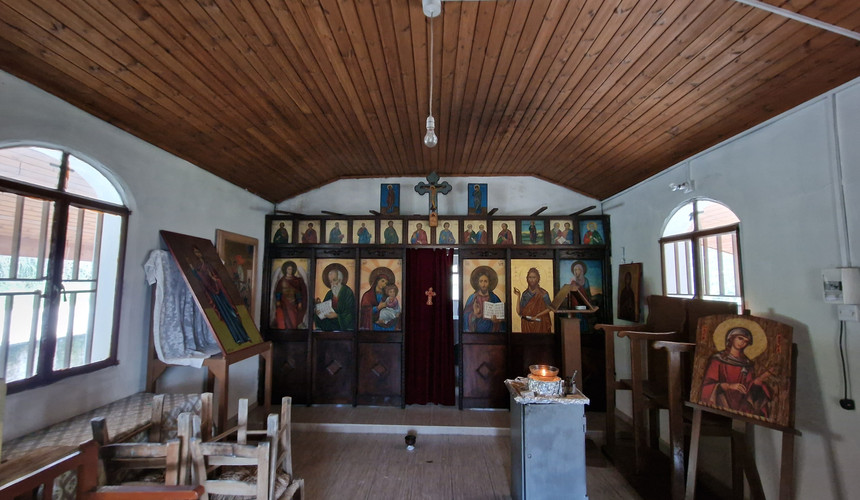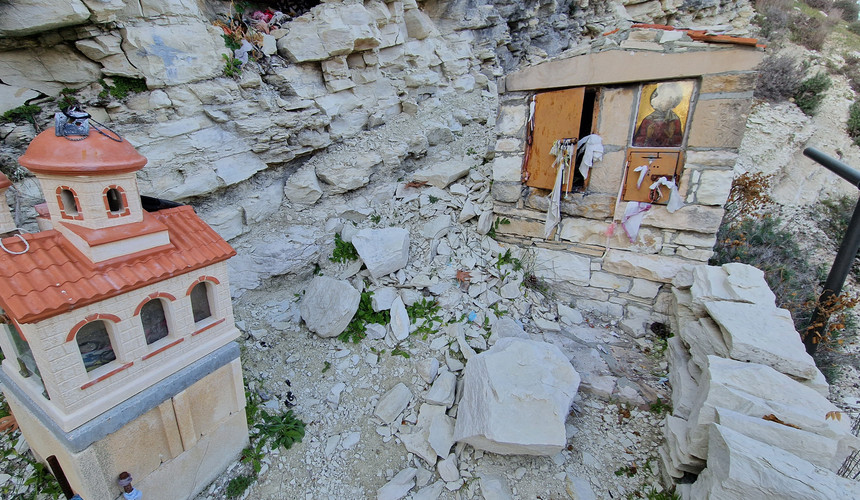Koilani is a picturesque village located near the west bank of Kryos River, a tributary of the Kouris River, at an altitude of 820 meters. Surrounded by tall mountains on all sides, Koilani has a unique and breathtaking landscape. The village is connected to Pera Pedi in the east, Vouni in the southeast, Mandria in the north, and Silikou in the south.
Koilani has unique and well-preserved traditional architecture that is similar to other wine-producing villages in the Limassol district. The village has narrow paved alleys, tiled roofs, charming upper floors, yard walls adorned with clay jars, balconies, and arches with detailed carvings, all made from local limestone. The village's houses are tightly packed together with red-tiled roofs, giving it a special and picturesque appearance that reflects its rich heritage.
Today, Koilani is known for its grapevine cultivation, particularly of wine varieties. Grapes and their secondary products, such as wine, zivania, soutziouko, kiofterka, and raisins, are the main products of Koilani. The village also boasts various fruit trees, including apple, pear, peach, golden apple, apricot, fig, walnut, and carob trees. Some of the wineries found in the village include: Agia Mavri, Vlasides, Vardalis, and Erimoudes, offering visitors the opportunity to taste the local wines and indulge in the village's wine-making heritage.
Koilani is also home to several churches and chapels that are of particular interest to visitors. The Holy Temple of Panagia Eleousa, built in 1907 and located in the center of the community, serves as the main church of the village. The Holy Temple of the Monogenis, dating back to the 17th century and dedicated to the Monogenis Son of God, is the only church in Cyprus with this dedication and now functions as a museum. The Chapel of Agia Mavri, boasts significant wall paintings and is built on a small plateau at the foot of a vertical rock, beneath a 1,200-year-old plane tree.
In addition to its religious landmarks, Koilani also features three museums. The Ecclesiastical Museum, established in 1984, displays exhibits covering approximately seven centuries. The Vine Museum, open since 1990, showcases traditional Koilani houses and vineyard equipment. The Olive Mill Museum provides insights into the traditional olive oil production in the area. Furthermore, Koilani is home to three watermills, the Mills of Panagia, January, and Yiannis Metaxas, which were once integral to the community's commercial activity.
The two medieval bridges in Koilani add to the village's historical charm. The Agia Mavri bridge, a small single-arched bridge surrounded by wild vegetation and believed to date back to the Medieval period, provides a glimpse into the rich cultural history of the area. The Agia Marina bridge, a beautiful small bridge with a semicircular arch, features one of the three watermills in the area and was restored in 2008 by the Antiquities Department to ensure its preservation for future generations.
For the more adventurous, the Neromylos (Watermill) nature trail in Koilani village is also is a great option. It offers the opportunity to explore the abundant natural beauty of the area while also passing by historic and important landmarks.
In conclusion, Koilani is a charming village that offers visitors a chance to immerse themselves in the natural beauty and rich cultural heritage of Cyprus. Whether you're interested in hiking, wine-tasting, or exploring historic landmarks, Koilani has something for everyone.





















































Comments